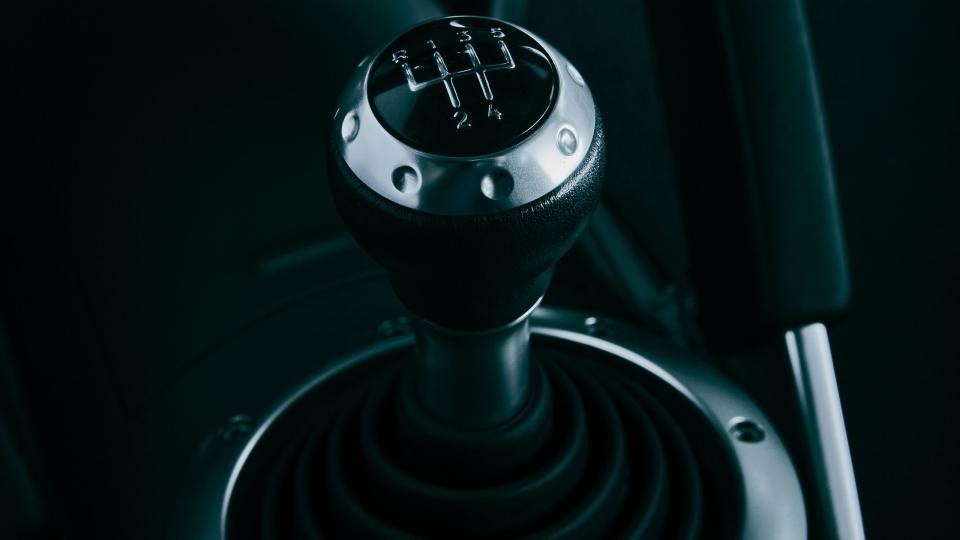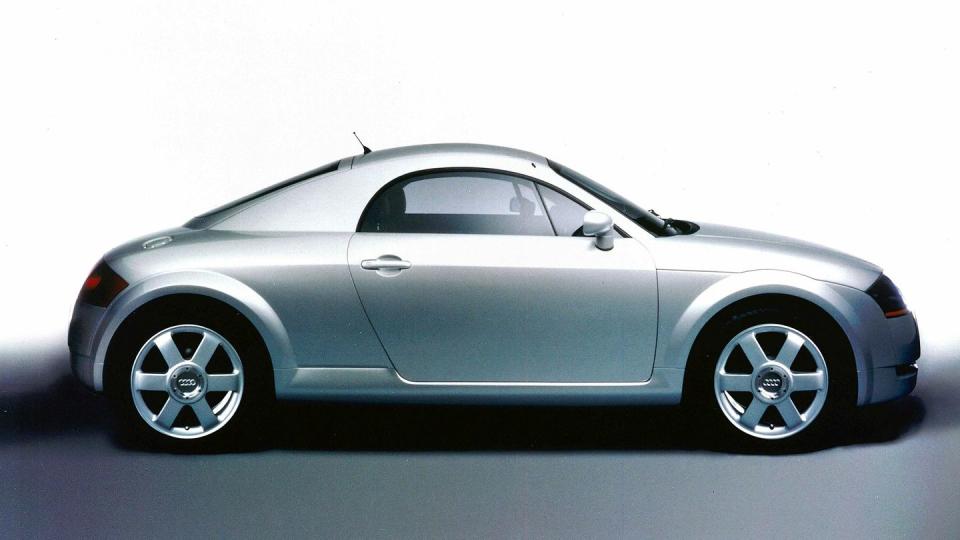The Market Still Hasn't Recognized the Greatness of the Original Audi TT


Brian McCauley owns five Audi TTs. “It’s a cool car. You don’t see them very often.” McCauley explains his affection and affliction. “It was ‘the German Miata.’ ‘The hairdresser car.’ ‘It’s just a Golf with a Beetle squished on top of it.’ All these stupid things that people say.” McCauley’s husband, Dan Klaudt, chimes in: “It was the first Audi design I fell in love with.”
This story originally appeared in Volume 18 of Road & Track.
The TT was built to inspire passion, not to be an anonymous corpuscle in the traffic stream. It appeared when Audi was on the verge of extinction in America, announcing the company wasn’t going without a fight. The car was distinctive and pugnacious, and it didn’t look like anything else from the Nineties. It was the vanguard of a resurrection.
Destined to be one of the most beloved and respected designs of its time, the TT had nostalgic elements, but the overall theme was modern. Even avant-garde. It helped launch an industry-wide mania for retro style that would result in reborn Mini Coopers, Chevrolet Camaros, and Ford Thunderbirds, among many others. Is the first-generation TT a classic? Not yet. But maybe.

A quarter-century and three generations later, the TT heads into retirement, its job done. This small coupe and roadster imbued Audi with style and street cred, enough that it now sells vast numbers of engorged SUVs to people who sit on HOA boards. So its legacy is not all for the good.
“Audi had its issues,” designer Freeman Thomas recalls of the time the TT was gestating. The company was desperate. In 1985, it sold 74,061 cars in the United States. But then, on November 23, 1986, CBS’s 60 Minutes aired a segment titled “Out of Control,” accusing Audi’s flagship 5000 sedan of being prone to uncontrollable sudden acceleration. Sales collapsed and kept collapsing, down by roughly 33 percent in 1987 alone. By 1996, Audi sold only 27,279 cars here.
“But Audi was a tour de force of technology,” Thomas continues. “It had Quattro. It had the A8, with its all-aluminum space frame, and it had Walter Röhrl and all that rally success. We were tasked with how to communicate this.”

From concept to production, the TT design’s message remained pure—the first T for Tradition and the second for Technology. Building on hints embedded in Audi’s two 1991 mid-engine concepts—the W-12-powered Avus and the V-6-equipped Quattro Spyder—the TT was striking without being cartoonish. And while those two exotic concepts weren’t economically feasible, the TT had to be. Therefore, it was built upon mainly Volkswagen pieces and made largely from steel, which, ironically, is mostly iron.
“Our idea was simply to prove that a no-compromise car of character can be built on an economically viable basis,” Peter Schreyer, then Audi’s design chief, said to the editors of the book The TT Story. “We knew perfectly well that we couldn’t build a car capable of enhancing the company image if we economized at every possible opportunity, but we wanted to keep in touch with reality so that the cost controllers didn’t destroy our dreams once again.”

The TT’s advantage was that it was starting with better ordinary stuff. The “A4” component set was, somewhat confusingly, first used under the compact Audi A3 hatchback and then under the beloved fourth-generation VW Golf, GTI, and Jetta, as well as the New Beetle and a bunch of Škodas and SEATs. Unlike in larger Audis but mirroring setups in most mainstream front-drive cars, the engine was mounted transversely. It was conventional, and that, oddly, freed up the designers to run wild.
Conceptually, that linked the TT with many sporty cars, like the Ford Mustang (built on Falcon bones), the original Toyota Celica (mostly Carina sedan bits), and the VW Karmann-Ghia (a sexy-ish Beetle).
“That was when things really took off,” Audi’s then president, Franz-Josef Paefgen, recalled in The TT Story. “After that, Freeman Thomas was asked to make something of it.” In fact, according to Thomas, the final design was set even before the TT coupe concept was shown in 1995.
“We designed it to be approachable,” explains Thomas, the American who, in addition to the TT, also drew the Concept 1 that would become the New Beetle. “It bridges the legacy of Auto Union with the future. The TT was polarizing; love it or hate it.”

The TT design is essentially spare. The body’s shape makes more of a statement than any adornment could: streamlined like the Auto Union racers of the Thirties but precisely fit, with flush glazing and radiused wheel wells that give some muscular heft. It was sensational then and almost universally acclaimed as the exemplum of Audi’s new design language.
“If you consider Audi’s past, you’ll see that it undoubtedly divides into two main periods,” Paefgen told Jürgen Lewandowski in an interview for The TT Story. “First of all, there was the period initiated and shaped by Dr. [Ferdinand] Piëch, in which the marque redefined itself by introducing new technologies and rigorous quality standards....

“This was followed by a second phase, in which emotion was introduced into the equation, in parallel, naturally, with further developments on the engineering side. With powerful and distinctive advertising and a design standard that set Audi increasingly apart from the rest, it built up a fund of goodwill—a feel-good factor—around the engineering that clearly benefitted the company. The TT represents a powerful statement to round off this second phase.”

 Yahoo Autos
Yahoo Autos 